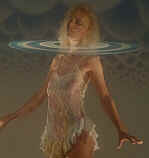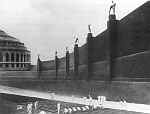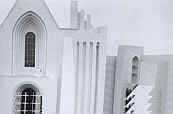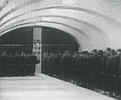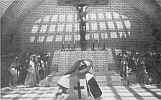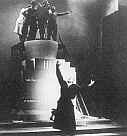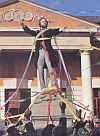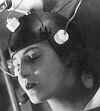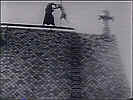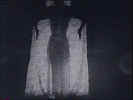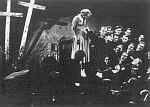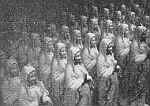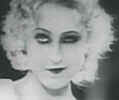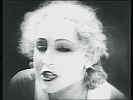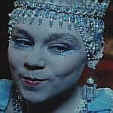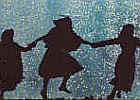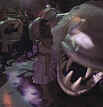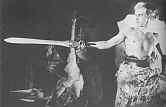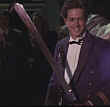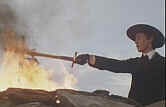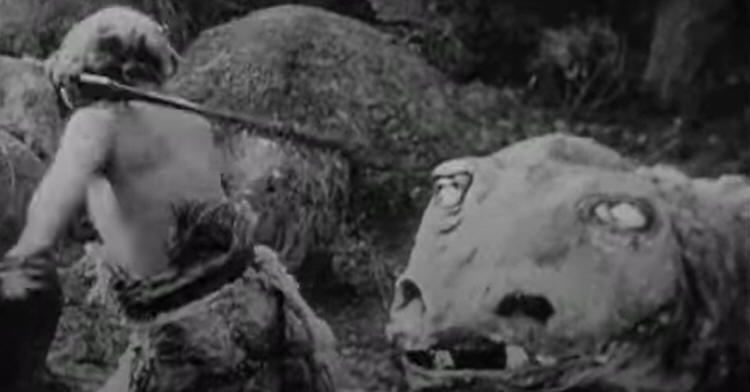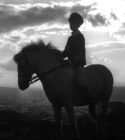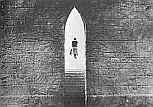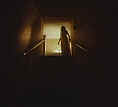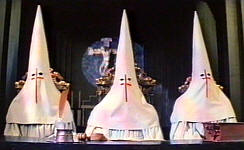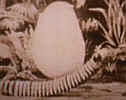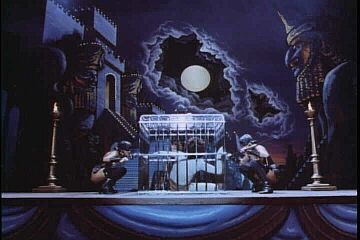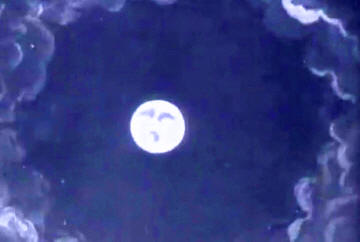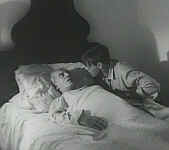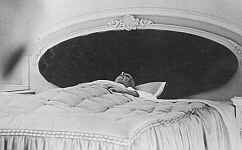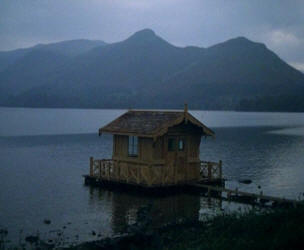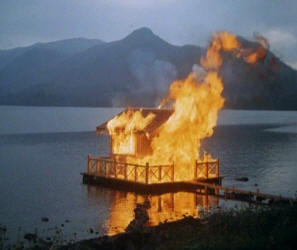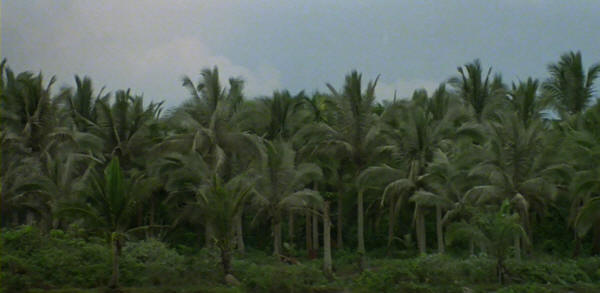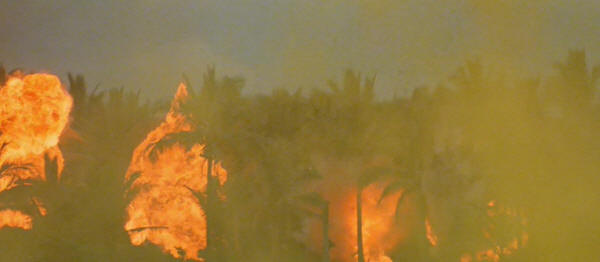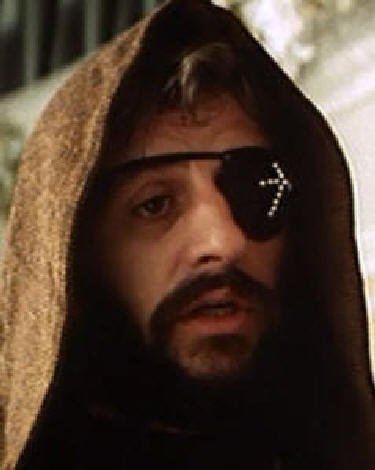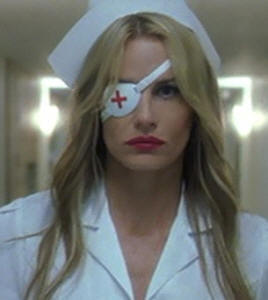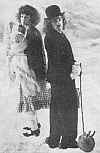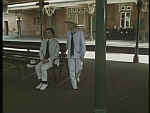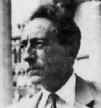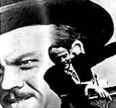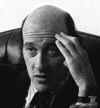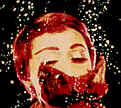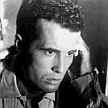|
Russell was born in the year that two influential films came out- The Jazz Singer which brought synchronised speech to the movies, and Fritz Lang's Metropolis. Lang's Metropolis was used by Russell in a number of films, most explicitly in Aria...
...but its influence on Russell goes much further
Fritz Lang Ken Russell
from the massive outer walls of Metropolis and Loudun (The Devils)...
...to the inner arches and white brick
and the studio of Gaudier in Savage Messiah.
The Music Lovers when Tchaikovsky becomes his own statue on the pedestal
and Daltry undergoing treatment in Tommy
Tommy and Gothic on the rooftops
Lisztomania
Lourdes
The robot Maria seduces with eyes and gestures as does Salome
Running through rain (Metropolis) or fireworks (The Music Lovers)
The snake of Siegfried being killed comes back as a direct reference in The Lair of the White Worm
Lair and Mahler
The famous image of Elgar on the horse can find its inspiration in Siegfried
A figure silhouetted in a doorframe walking down stairs or along a corridor is a favourite Russell shot (Lair, Gothic and most Russell films)
Metropolis has a religious message as the people turn from the faith (Maria) to idolatry (the robot Maria), but the workers reject the new hedonism (Tommy's we're not going to take it) and the films ends, just as The Devils, with a public execution by burning as the walls of the city collapse. And like Russell, Lang can get a brilliant performance from an inexperienced actress (Brigitte Helm playing Maria and the robot was 17 years old), and despite this both have a reputation for being unable to handle actors. Although Lang's career after Metropolis (1927) lasted up to 1960, it was the early silent Lang that Russell is influenced by. The films Russell saw in his youth.
Early cinema Russell mentions in his book The Lion Roars his other influences: Cocteau, René Clair, Vigo and Orson Welles.
Two inquisitions: left Jean Cocteau's Ruy Blas and right The Devils
His major amateur film Amelia and the Angel is a remake of The Red Balloon (left) by Albert Lamorisse and owes much to Jean Cocteau. And in Salome's Last Dance the scenery is a direct tribute to the film pioneer Georges Méliès, as is the film shown on television in Lair of the White Worm. Ken's Salome with the artificial moon and clouds...
...and the scenery in the 19th century films of Meliés.
Borrowing and lending The amateur film Peepshow is a version of Robert Wiene´s The Cabinet of Dr Caligari. Russell used the structure of Orson Welles´ Citizen Kane in Valentino and Lion's Mouth. Billion Dollar Brain included a modern version of the soldiers crossing the frozen lake then crashing under the ice, from Eisenstein's Alexander Nevsky (1938), though this was mentioned in the original novel. At times Altered States suffers in comparison with the "psychedelic" sequences of 2001 A Space Odyssey, conversely Kubrick borrowed a memorable image from Russell's Song of Summer.
The hut by the lake bursting into flames which starts Ken's Mahler.
Coppola pays homage in the opening of Apocalypse Now! and Tarantino in Kill Bill vol 1
Ringo Starr (left) as the pope in Lisztomania and Kill Bill (right) by Tarantino 28 years later.
The storm scene in Gothic (1986) when the tree is hit by lightning and bursts into flame is similar to the storm/tree sequence in Poltergeist (1982). In his 1974 review of Wicker Man (in Films and Filming) Alexander Stuart says "the burning sequence... ends up a poorly executed parody of Russell's The Devils".
Contemporaries Ken's early films had the same snappy editing as Dick Lester (A Hard Day's Night). He cites Orson Welles (Citizen Kane) and Alfred Hitchcock as a major influence. Directors influenced by Russell include Derek Jarman. Russell is probably unique in combining imagery with commercialism. Whereas Kenneth Anger can bring in more striking images (The Inauguration of the Pleasure Dome) and Jarman is at times more controversial (Sebastian) and daring (Blue) neither can produce a film that the general public wants to see. Women in Love is an example where Ken has mainstream success with a film that includes homo-erotic imagery. Conversely conventional mainstream directors such as Attenborough and Spielberg end up making staid films. And in the period that David Lean took to make a single film after Ryan's Daughter, Russell made nine cinema films, four television films and four operas.
Maverick directors Perhaps two directors come closest to Russell's talent and maverick ability. Robert Altman has a background in TV (Bonanza) and mainstream success (M*A*S*H) combined with experimentation (Nashville). And Jean Luc Goddard has Russell's eye for colour and the visual (Weekend). All three are on the Aria set of short films. A recent example of a film that owes a lot to Ken Russell is The Cell. Even Ken's worst film (Mindbender) contains an image of beauty. And his best films are jam-packed solid with them. |

